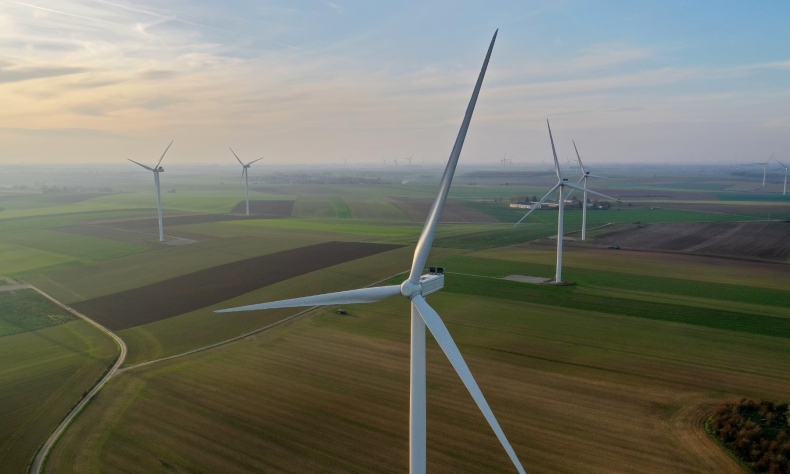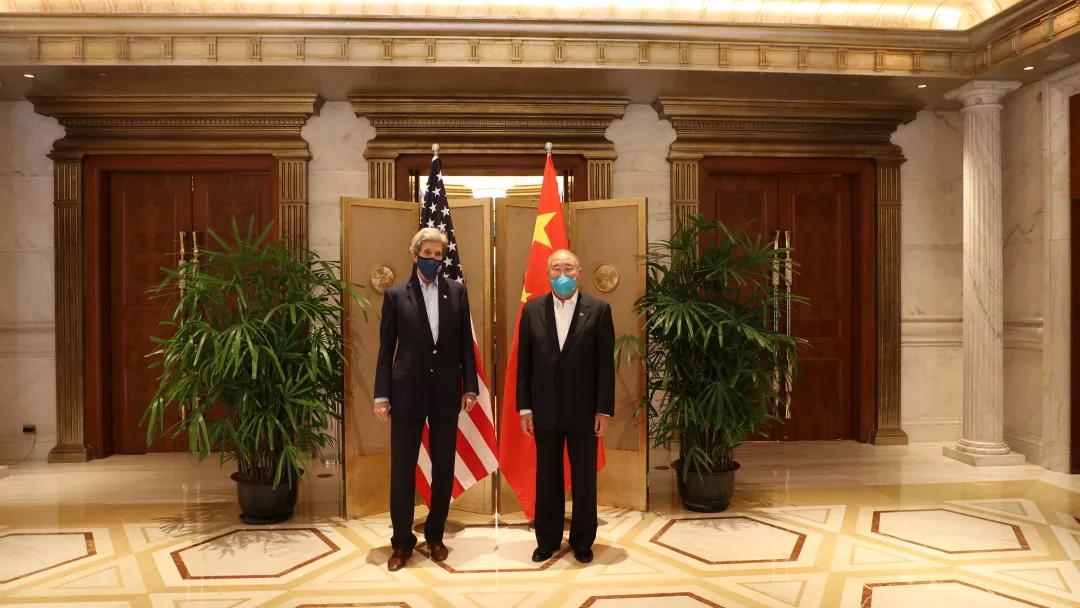Can the Climate Crisis Help Cool US- China Tensions?

Relations between China and the United States have hit their rockiest point for decades but cooperating on climate change has the potential to be a point of rapprochement for both sides to build from.
When John Kerry touched down in Shanghai last week, few would have begrudged him for feeling slightly anxious as he prepared to meet with China’s special envoy on climate change Xie Zhenhua.
This was after all, effectively the morning after the night before – the first time the two countries had met since their explosive meeting in Alaska last month, a meeting that turned into a less-than diplomatic ding-dong in front of the world’s press.
In the month since that now infamous summit, relations between China and the United States have continued to become fraught, with tensions rising over a number of issues including trade, technology, human rights and Taiwan.
Climate change is however a different proposition. Both countries have invested significant political capital into their climate change plans; Chinese President Xi Jinping by committing China to reaching carbon emissions peak by 2030 and carbon neutrality by 2060; US President Joe Biden by promising green infrastructure and re-signing the Paris Agreement, offering confidence that the two might be able to cool relations to deal with this problem.
Climate protection a number one priority
Given what was at stake, Xie and Kerry’s meeting was thankfully a much more positive affair, with their two-day summit ending with a strong commitment from both sides to cooperate on reducing carbon emissions – much to the relief of many an environmentalist.
“China and the United States are committed to cooperating with each other and with other countries to tackle the climate crisis, which must be addressed with the seriousness and urgency that it demands,” a joint statement released at the end of two-day summit stated.
Both sides also agreed to eight areas for continued discussion, including increasing cooperation for the upcoming COP26 meeting in Glasgow this year, as well as taking further steps to implement the Paris Agreement and establish immediate short-term action to address the climate crisis.
Key to the formation of the joint statement was not only to the seriousness in which both countries now take climate action, but also the excellent working relationship of Xie and Kerry. In stark contrast to US Secretary of State Antony Blinken and China’s most senior foreign policy official, Yang Jiechi’s fraught exchanges last month, Xie and Kerry’s discussions were more cordial and friendly, seemingly stemming from their positive experience working together in the lead up to the 2015 Paris Agreement.
The US tone was also markedly less aggressive than the meeting in Alaska, and although concerns were raised by the US about plans in China to build more coal power stations, Kerry’s words were far less antagonistic, stating in a press conference after the summit with regards to China: “We’re not seeking to force anybody. We’re seeking cooperation.”

A catalyst for change?
To what extent this cooperation can stretch to other areas of the China-US relationship is the next big question. Because while the two-day summit may have ended on an upbeat note, there is no hiding the fact that, climate aside, there is little in which China and the US currently see eye-to-eye on.
Some of those disagreements were during Xie and Kerry’s summit, although not in the city of Shanghai.
Around 800 kilometres south of the Chinese municipality, another American delegation were holding their own conference with Tsai Ing-wen and her party in Taiwan – a move that drew a sharp response from the Chinese foreign ministry, while in the US, President Biden was hosting Japanese prime minster Yoshihide Suga and using it as an opportunity to once again bring up issues such as the South China Sea, Diaoyu Island, Hong Kong and Xinjiang.
Yet these two events should not distract from the potentially symbolic development of a positive China- US climate summit. It has been a very long time since representatives from the two sides have been able to hold constructive talks and agree to a joint statement, while the ease in which the statement was agreed upon and the lack of controversy during Kerry’s two-day visit proves that when push comes to shove, there is an appetite from both sides for a constructive working relationship.
While some might be willing to cast this off as small-fry given the bigger issues facing the two countries, the state of current China-US relations means any positive gains are significantly better than no gains at all.
An end to all or nothing diplomacy
That some are so quick to dismiss gradual improvements is a significant problem running through the current China-US relationship, in part fueled by the “all or nothing” approach that characterized the previous US administration’s dealings with China.
Under the tutelage of former President Donald Trump and his band of hardliners, diplomatic efforts with China were conducted like hostile business meetings – incredibly aggressive and with little regard for diplomatic norms. Mega-deals and a “winner-takes all” attitude symbolised their approach to China, and it appears that many still measure the two countries relationship through this particular position.
Politics however is not so simple, requiring countries to work together even when they would rather not. Germany and the EU, for example, are currently engaged in a fraught diplomatic stand-off with Russia over a number of issues including the treatment of Russian opposition leader Alexei Navalny. Yet they are still able to compartmentalize their disagreements to cooperate on the construction of the Nord Stream Two pipeline, a key piece of infrastructure that will help solve the continent’s energy concerns.
New Zealand and China also do not see eye-to-eye on every issue, yet that has not stopped Prime Minister Jacinda Ardern taking to the (virtual) stage at the Boao Forum in Hainan and looking to increase trade and cultural relations with China – in spite of very heavy pressure from some western countries not to do so.
Get rid of the negativity
At some point, the US and China need to do the same, stripping away the negativity that has engulfed their relationship, and finding common ground from which to start afresh.
Climate change has the potential to be that point of rapprochement, and from what was witnessed in Shanghai last week – cooperating where cooperation could be found and dealing with each other on the basis of equal status and respect – there are positive signs going forward.
To what extent this momentum continues depends how full you find your glass, but at the very least, Xie and Kerry’s summit shows that China and the US can still work together, a factor that has been sorely missing over the past few years.
 Facebook
Facebook
 Twitter
Twitter
 Linkedin
Linkedin
 Google +
Google +







